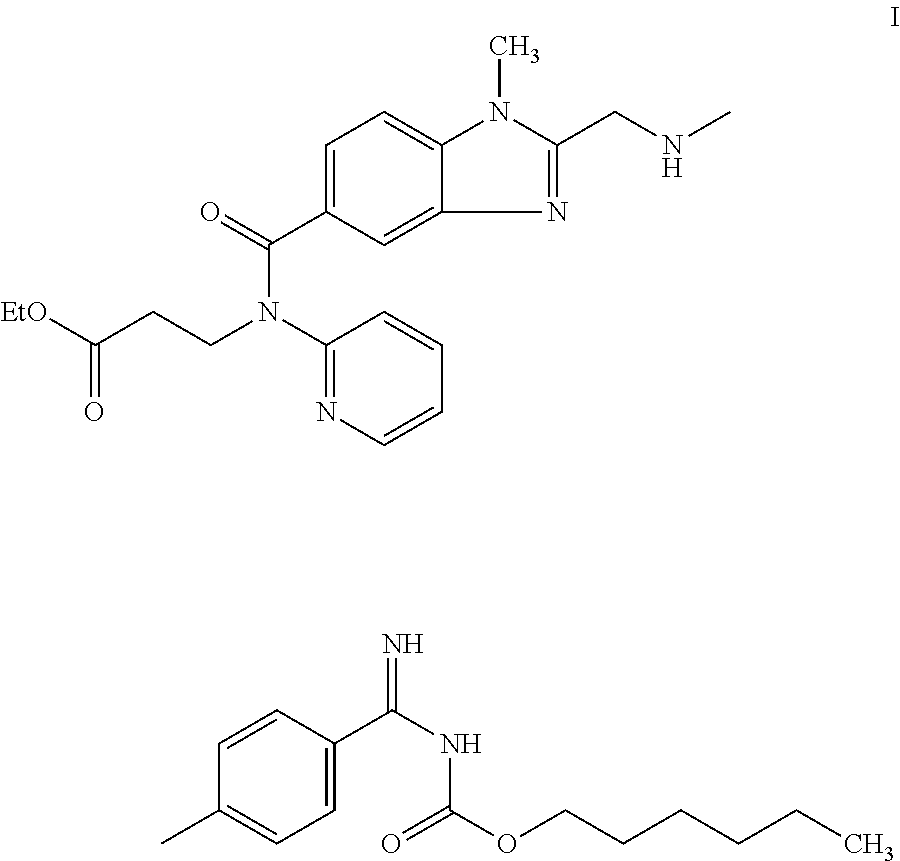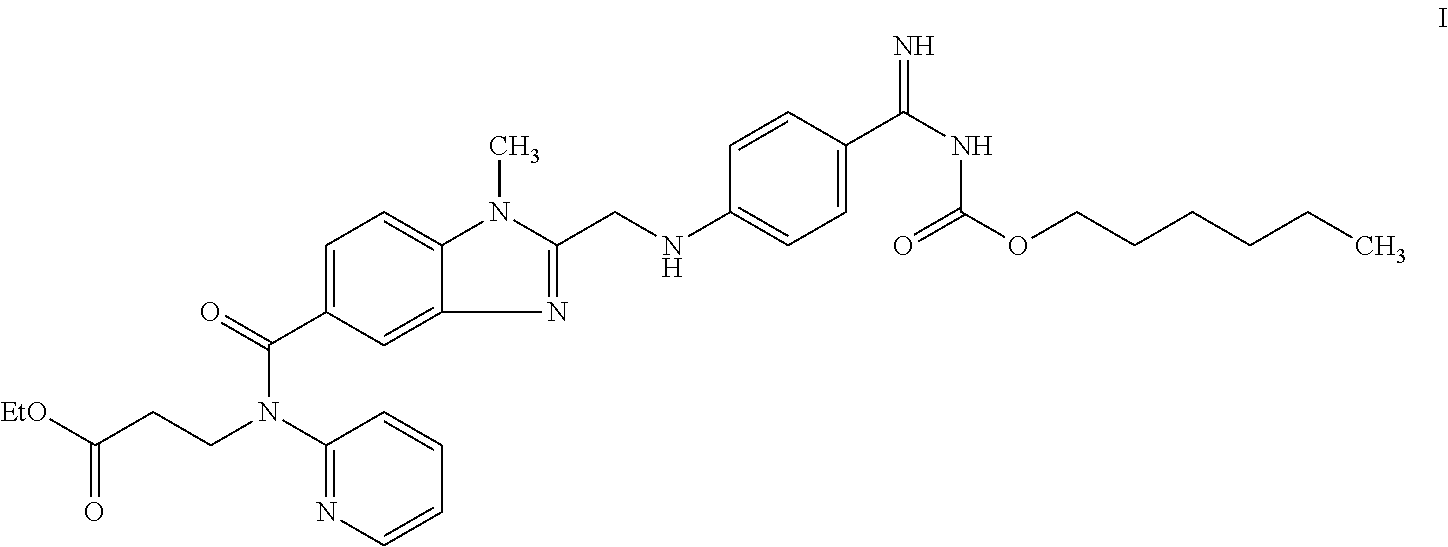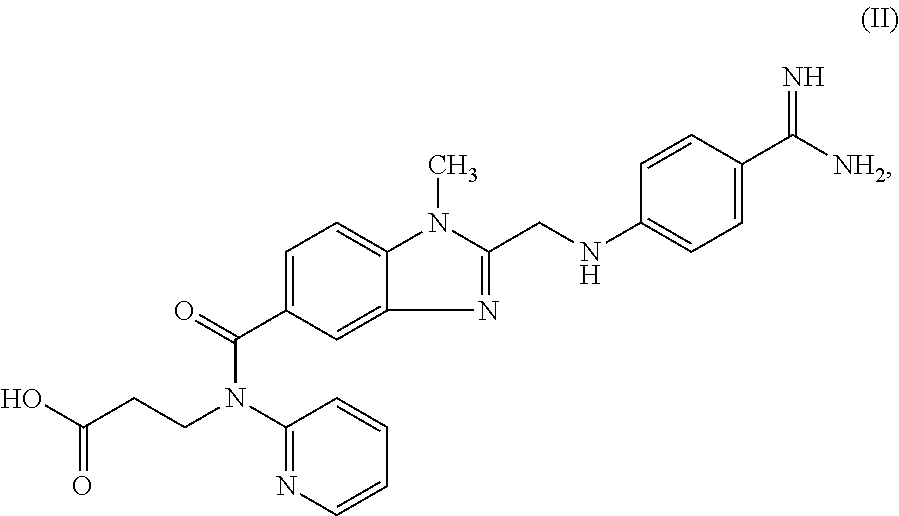Emergency interventions of active charcoal with dabigatran etexilate overdosing
a technology of dabigatran etexilate and active charcoal, which is applied in the direction of antinoxious agents, extracellular fluid disorders, separation processes, etc., can solve the problem of needing emergency drug neutralization
- Summary
- Abstract
- Description
- Claims
- Application Information
AI Technical Summary
Problems solved by technology
Method used
Image
Examples
example 1
Preparation of the Starter Pellets
[0018]480 kg water are heated to 50° C. and 120 kg of acacia (gum arabic) are added with stirring in a conventional mixing container having a dished end and stirrer. Stirring is continued at constant temperature until a clear solution is obtained. Once there is a clear solution (usually after 1 to 2 hours) 600 kg tartaric acid are added with stirring. The tartaric acid is added at constant temperature while stirring is continued. After the addition has ended the mixture is stirred for about another 5 to 6 hours.
[0019]1000 kg tartaric acid are added to a slowly rotating (3 revolutions per minute) unperforated horizontal pan with a spraying and powder applying unit (e.g. Driamat 2000 / 2.5). Before spraying starts, a sample of the acid is taken for screening analysis. The acid in question is tartaric acid particles with a particle size in the range from 0.4-0.6 mm.
[0020]The acid rubber solution obtained by the above method is sprayed onto the tartaric a...
example 2
Isolation of the Starter Pellets
[0023]To prepare the isolating suspension, 666.1 (347.5) kg of ethanol are placed in the mixing container and the hydroxypropylmethylcellulose (33.1 (17.3) kg) is added with stirring at approx. 600 rpm and dissolved. Then under the same conditions 0.6 (0.3) kg dimeticone are added. Shortly before use, talc (33.1 (17.3) kg) is added, again with stirring, and suspended.
[0024]The acid pellets 1200 (600) kg are poured into the coating apparatus (e.g. GS-Coater Mod. 600 / Mod. 1200) and sprayed therein in the rotating pan with the isolating suspension described above in a continuous spraying process lasting several hours at a spraying rate of 32 kg / h for the 1200 kg mixture or 21 kg / h for the 600 kg mixture. The pellets are also dried continuously with an air supply at up to 70° C.
[0025]After the GS-Coater has been emptied, the isolated starter pellets are fractionated by screening. The product fraction with a diameter ≦1.0 mm is stored and used further.
example 3
Preparation of the Dabigatran Etexilate Suspension
[0026]26.5 kg hydroxypropylcellulose are added to 720 kg isopropanol in a 1200 litre mixing container fitted with a propeller stirrer and the mixture is stirred until fully dissolved (about 12-60 hours; roughly 500 rpm). Once the solution is clear, 132.3 kg of dabigatran etexilate methanesulphonate (polymorph I) are added with stirring (400 rpm) and the mixture is stirred for about another 20-30 minutes. Then 21.15 kg of talc is added at a constant stirring rate and stirring is continued at the same speed for about another 10-15 minutes. The steps described above are preferably carried out under a nitrogen atmosphere.
[0027]Any clumps formed are broken up by homogenising using an UltraTurrax stirrer (about 60-200 minutes). The suspension temperature should not exceed 30° C. throughout the entire manufacturing process.
[0028]The suspension is stirred until ready for further processing to ensure that no sedimentation occurs (at roughly 4...
PUM
| Property | Measurement | Unit |
|---|---|---|
| weight loss | aaaaa | aaaaa |
| weight | aaaaa | aaaaa |
| differential pressure | aaaaa | aaaaa |
Abstract
Description
Claims
Application Information
 Login to View More
Login to View More - R&D
- Intellectual Property
- Life Sciences
- Materials
- Tech Scout
- Unparalleled Data Quality
- Higher Quality Content
- 60% Fewer Hallucinations
Browse by: Latest US Patents, China's latest patents, Technical Efficacy Thesaurus, Application Domain, Technology Topic, Popular Technical Reports.
© 2025 PatSnap. All rights reserved.Legal|Privacy policy|Modern Slavery Act Transparency Statement|Sitemap|About US| Contact US: help@patsnap.com



